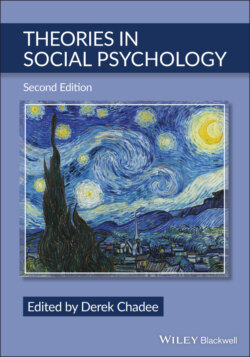Читать книгу Theories in Social Psychology - Группа авторов - Страница 13
Magnitude of Reactance
ОглавлениеPsychological reactance is influenced by both threat and freedom (Wright et al., 2004). The theory postulates that there are several factors that influence the magnitude of psychological reactance. These include the strength of the threat to one’s freedom; the presence of freedom which emerges from the interruption of free behaviors or barriers preventing their expression; the importance of freedom in the realization of needs; and the extent to which the needs are core to the individual’s existence. There is a direct relationship between reactance and the importance of the threatened. For example, being forced to choose between two valueless alternatives will not create as high a psychological reactance as being forced to choose between attractive alternatives. The relative importance of the freedom, and not only the importance, is a determining factor of reactance. For example, if choice alternatives are of equal cost (e.g., the choice alternative of dining at similar kinds of restaurants), removal of one alternative or the other will lead to relatively the same degree of reactance. However, if the choice alternative included a high-end computer and this alternative was denied, the magnitude of psychological reactance would be relatively much higher because of the relatively higher attractiveness of the computer.
The proportion of threatened freedoms, that is the number of free behaviors at risk as a proportion of the number of free behaviors, influences the magnitude of reactance. Threats that have implications for future threats to free behavior also arouse reactance (Brehm, 1966; Brehm & Brehm, 1981; Miron & Brehm, 2006; Wicklund, 1974). Threats may be defined or arbitrary. Defined and specific threats have limits to the threats and are justified (e.g., the denial of entry to any vehicles other than taxis into a particular roadway). This restriction to a free behavior has a physical limit and a rationale that allows for the reduction of traffic congestion. Arbitrary threats are ill-defined (e.g., an office imposing restrictions on casual conversations during working hours). This kind of threat carries high ambiguity and leads to extrapolations and speculations about different kinds of future prohibitions and restrictions. The magnitude of reactance will, therefore, be higher for arbitrary threats than defined threats.
Brehm and Brehm (1981) discuss the aggregated impact of a number of sub-threshold threats from a source that, when collectively combined, is potent enough to be considered a threat to one’s freedom. Each sub-threat on its own does not have the efficacy to constitute a threat. Threats reach an optimum point. Brehm and Brehm (1981, p. 58) write about the threshold of freedom elimination which exists when the “perceived magnitude of threat overshadows the perceived importance of freedom,” and about the optimum point of a threat: “the point at which a threat turns into an elimination of freedom is the point at which the magnitude of reactance is greatest. Additional force (and perceived threat) beyond that point has no effect on the magnitude of reactance.”
The importance of the freedom moderates reactance. In other words, the threat in itself does not produce the psychological reactance. For example, threats to freedoms of low importance, even with high-level threats, would create low levels of arousal and nonexpression of the freedom. However, freedoms of high importance lead to higher reactance with a motivation to express the threatened freedom.
The magnitude of the threat is influenced by the number of freedoms threatened by one or more factors. Time is a moderator here. Reasonable time lapses between one threat and another prime the person to a second threat, and reactance is increased as compared to two or more threats being experienced simultaneously. Primed persons are more likely to express greater psychological reactance (Brehm & Brehm, 1981; Miron & Brehm, 2006). Wicklund (1974) postulates the hydraulic principle or summation effect of reactance. The principle states that when two freedoms are threatened, the reactance arousal of the first threat in which there are restrictions in the expression of reactance is channeled into the reactance arousal of the second threat to freedom. Brehm and Brehm (1981) later complemented the principle by identifying conditions under which the principle would best be applied. They identified three conditions: threats must be different, and at least two present, with some relationship between the threats or freedoms; a time-lapse must exist between threats, and there is no reduction of reactance for the first threat – the reactance is still present.
Some social factors that contribute to the magnitude of psychological reactance include monetary and verbal inducements, the attractiveness of the communicator, instructions, modeling behavior, role play, and the exertion of pressure for compliance (Brehm & Brehm, 1981).
